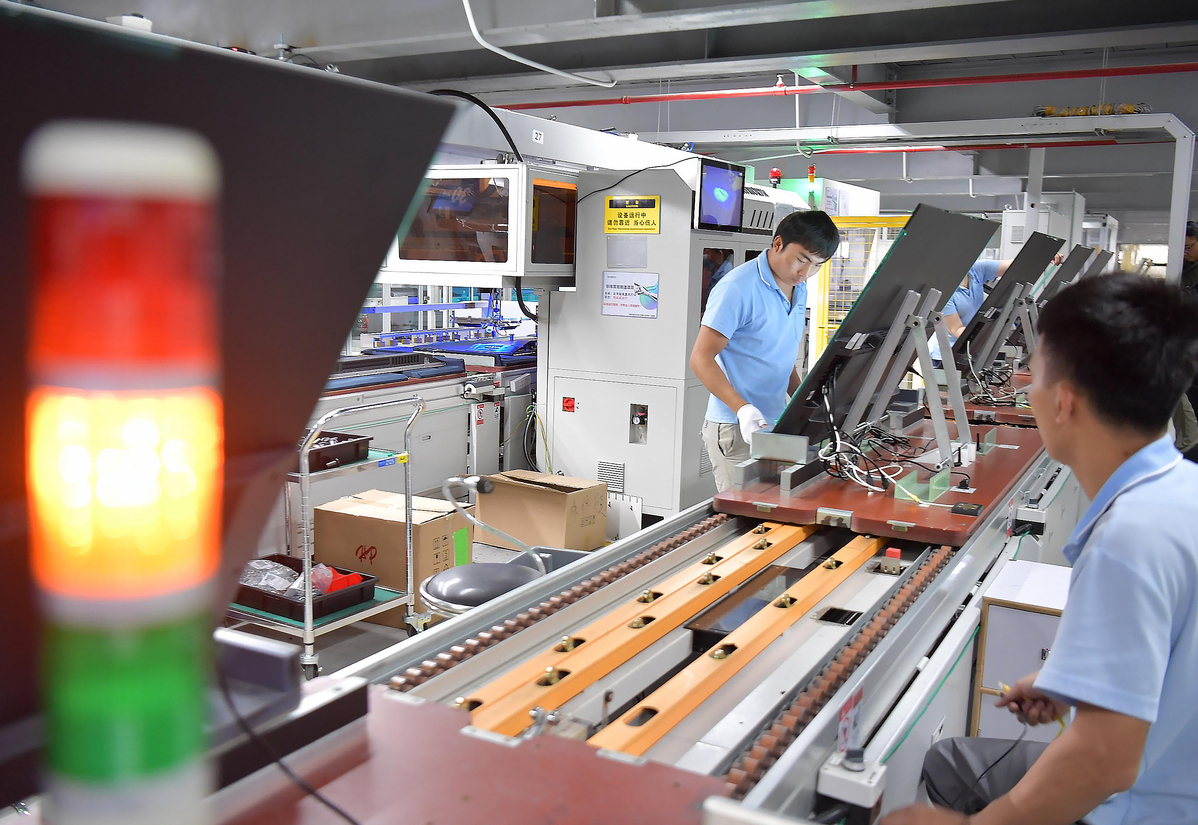HK, a beneficiary at the doorstep


The upgrading of Guangdong's manufacturing sector under the province's 14th Five-Year Plan (2021-25) is set to spur greater demand for the transfer of scientific innovations, with Hong Kong seen as a key beneficiary.
Experts say the special administrative region should grasp the opportunity by giving full play to its rich research resources and help forge an international science and technology innovation center.
Guangdong has been the main production base for Hong Kong manufacturers for more than four decades. According to the Chinese Manufacturers' Association of Hong Kong, there are currently more than 21,000 Hong Kong-funded manufacturing companies in the nine mainland cities of the Guangdong-Hong Kong-Macao Greater Bay Area.
"They're the extension of Hong Kong's manufacturing industry and make a significant contribution to the economies of Hong Kong and the Greater Bay Area," said Allen Shi Lop-tak, president of the association.
With the launch of Guangdong's 14th Five-Year Plan (2021-25) for high-quality development of the manufacturing sector, Shi sees the business environment in the province continuing to improve, with further preferential policies to be introduced to help the industry apply more high-tech technologies.
He said that the environment is conducive to the growth of Hong Kong-invested factories in Guangdong and can promote Hong Kong's re-industrialization — an initiative unveiled in the HKSAR's 2016 Policy Address with the aim of revitalizing traditional industries by using new technologies and developing emerging industries.
With the nation giving manufacturing high priority in the 14th Five-Year Plan (2021-25), Shi urged the Hong Kong government to formulate a comprehensive and forward-looking industrial policy and set more progressive and quantifiable development goals for re-industrialization.
For the semiconductor and integrated circuit industry — one of the most important emerging sectors listed in Guangdong's five-year plan for high-quality manufacturing development — he said Hong Kong has its own advantages.
In fact, the city's semiconductor industry had started early, but most of the research is fragmented, Shi said.
Hong Kong Science and Technology Parks Corp is preparing to build a microelectronics center with special facilities, such as clean rooms, dangerous goods storage warehouses and waste disposal systems that can meet the research and development needs of microelectronics manufacturers.
Moreover, Hong Kong's testing and certification services are on par with international professional standards, coupled with its sound intellectual property system and talent pool.
With these trump cards, Hong Kong could first develop a service platform for pilot tests before mass production to evaluate the feasibility and economic benefits of scientific and technological achievements.
Shi said this will enhance the SAR's status as an international science and technology innovation hub — a new development direction given under the national 14th Five-Year Plan for the first time this year.
Hong Kong-Shenzhen Innovation and Technology Park — a project wedged between the two cities — can serve as an entry point for Hong Kong to integrate into the development of Guangdong's chip industry, he said.
The park is positioned as one of the four major cooperation platforms in the Greater Bay Area under the nation's 14th Five-Year Plan.
Last year, the Hong Kong University of Science and Technology set up an incubator called Blue Bay in the park. So far, Blue Bay has cultivated more than 15 startups, all of which are established by professors or alumni of the university.
Qiu Xing, who graduated with a doctoral degree from the HKUST, is one of the entrepreneurs exploring new opportunities in the cradle. He found that most of the startups in the incubator are in the chip industrial chain.
His startup, Shenzhen UVChip High-Tech Group, focuses on photonic chip packaging and is "a spin-off" of the advanced silicon-based wafer-level MEMS technology developed at HKUST's Electronic Packaging Laboratory.
The laboratory, founded in 1997, covers a wide range of research areas on advanced packaging, such as photonic chip packaging, silicon integration technology and microsystems packaging. Packaging of microelectronic chips is a significant part of the semiconductor industry, and advanced packaging technologies are attracting growing attention by making microelectronic chips more compact, faster and more powerful.
Qiu said Hong Kong universities have enough scientific research results to be incubated, but Hong Kong's weakness lies in market and technology application. Due to the lack of manufacturing power in Shenzhen, he teamed up with a large Shanghai-based supplier of semiconductor components. He said working with a local supplier will make substantial savings for his company.
Therefore, he suggests that Hong Kong and Shenzhen could jointly build industrial parks dedicated to the semiconductor and integrated circuit industry.
Moreover, he hopes new manufacturing bases in Guangdong, as an innovation and startup hub, pay special attention to the needs of small startups because they're at a disadvantage in business negotiations with major suppliers as their initial volume of production is relatively small.
- China, Russia agree to deepen military cooperation
- Beijing set to open 8th railway station soon
- Zootopia in the air
- Former Heilongjiang vice-governor under investigation
- Police, villagers join overnight rescue for missing 76-year-old in Gansu
- Top court urges stricter regulation of minors' online behavior





































